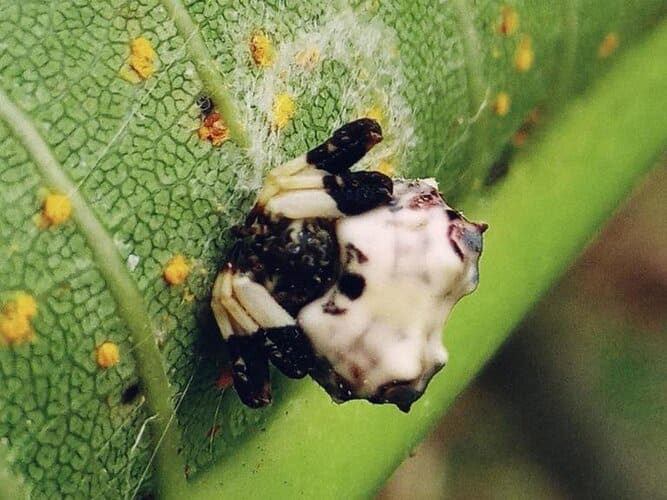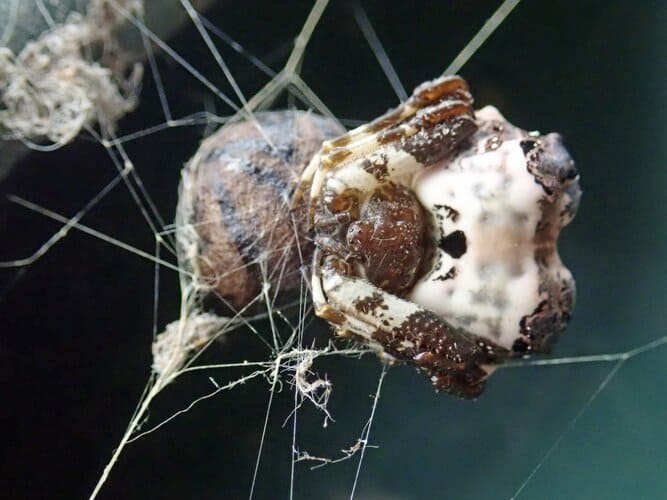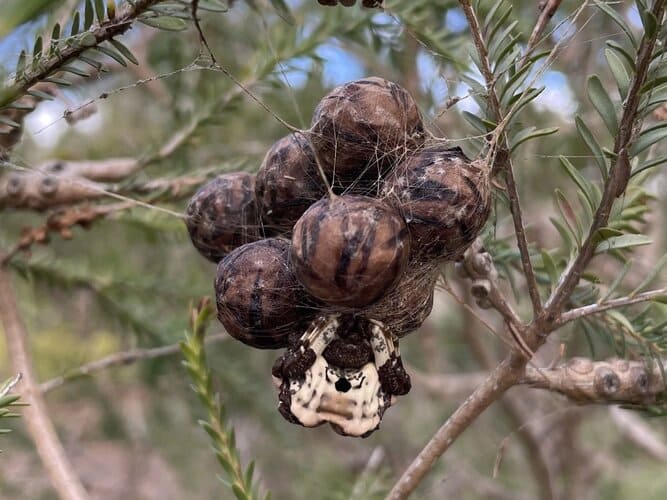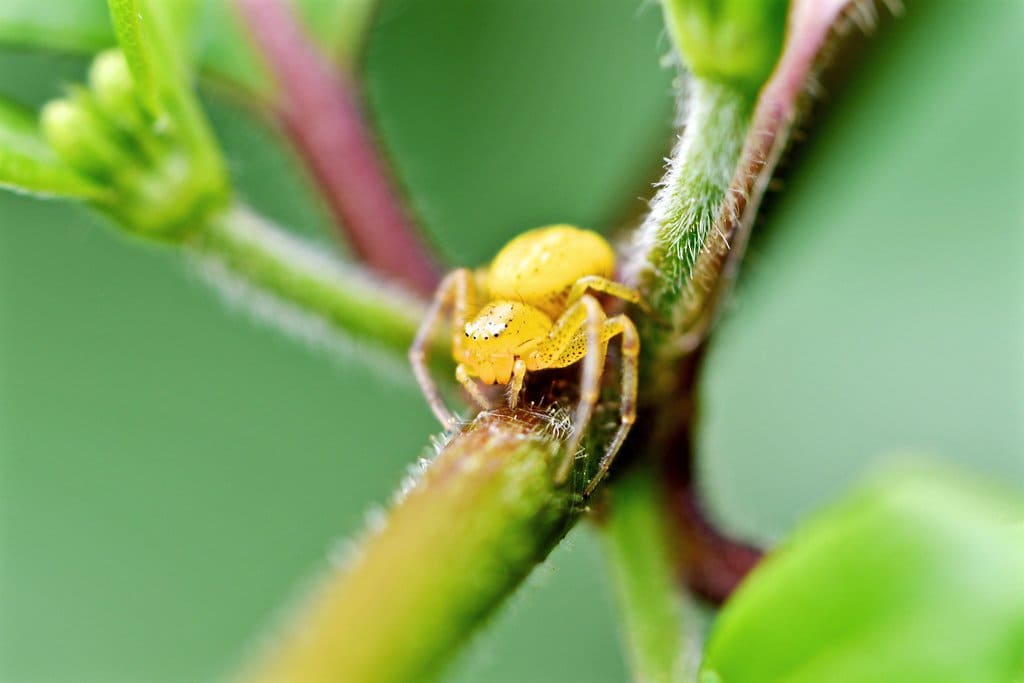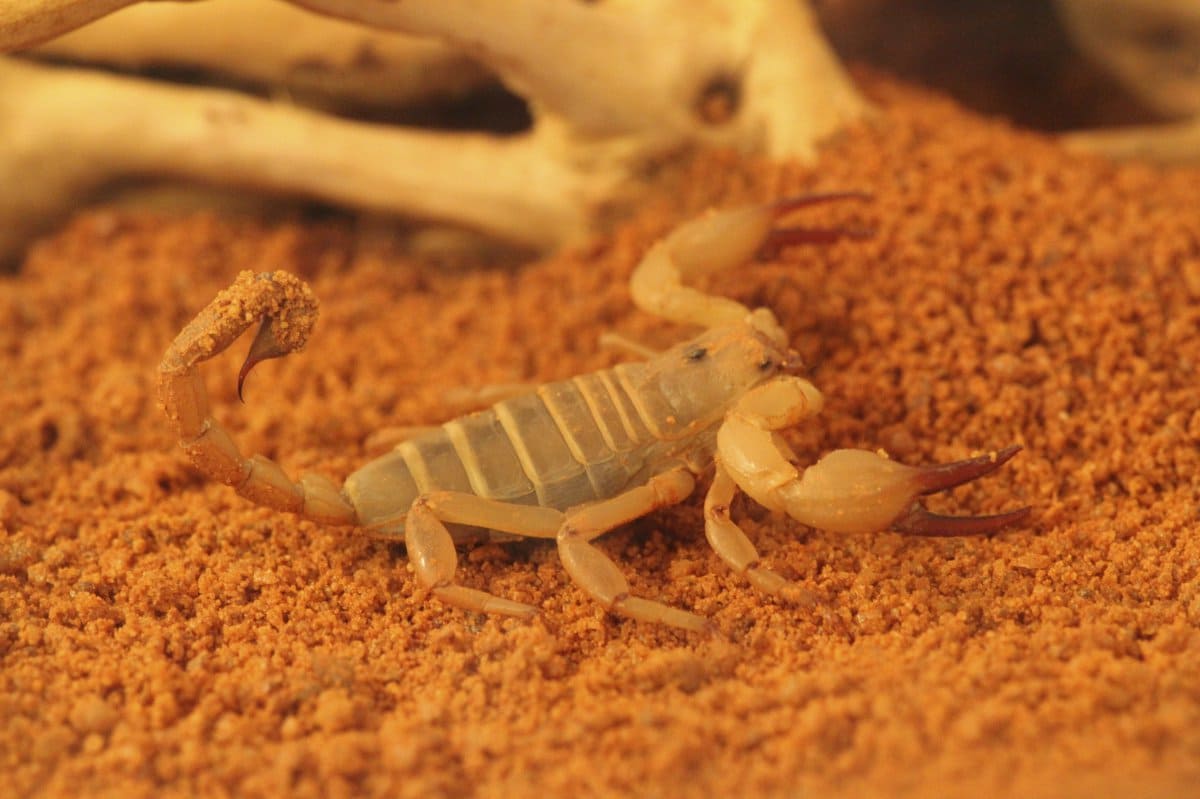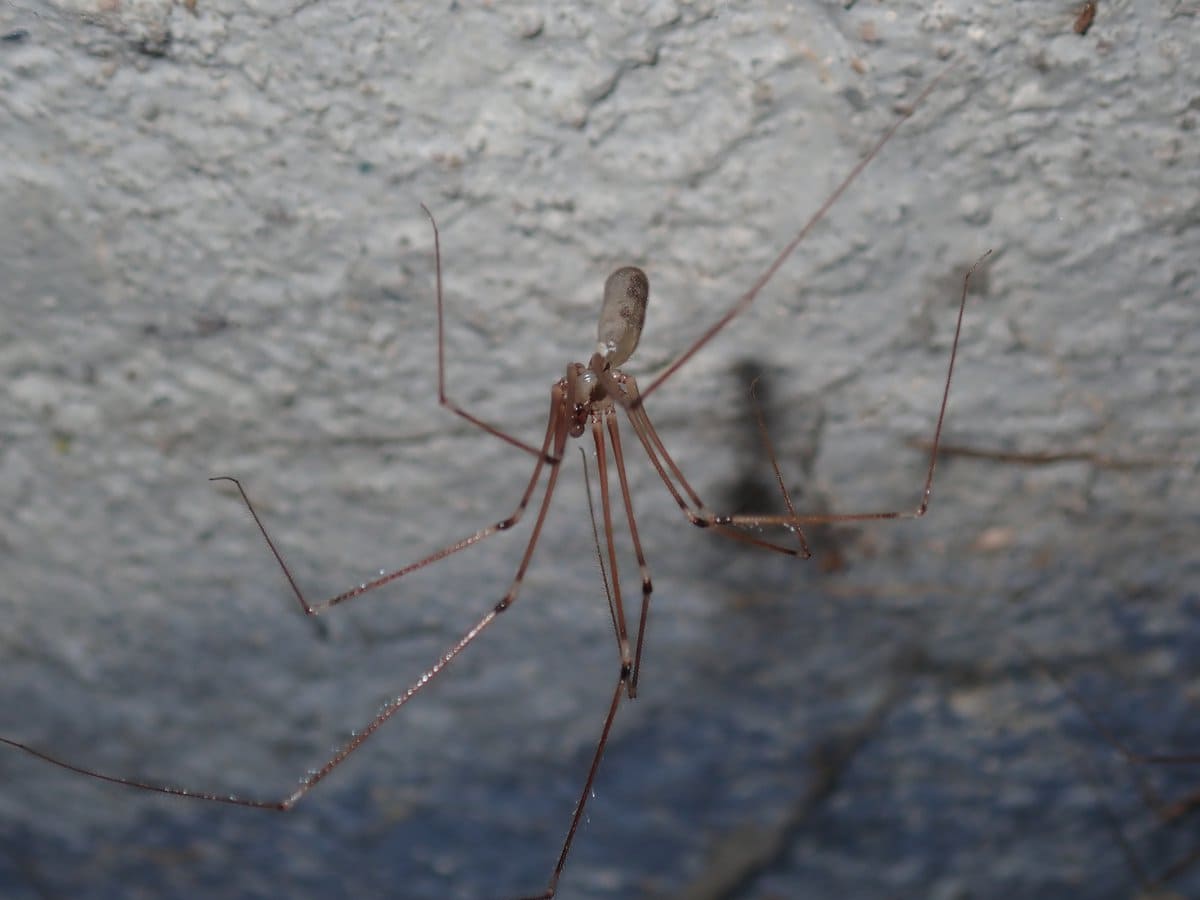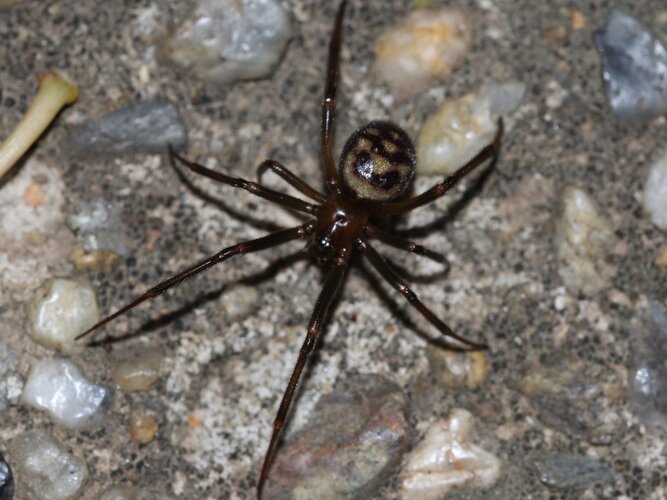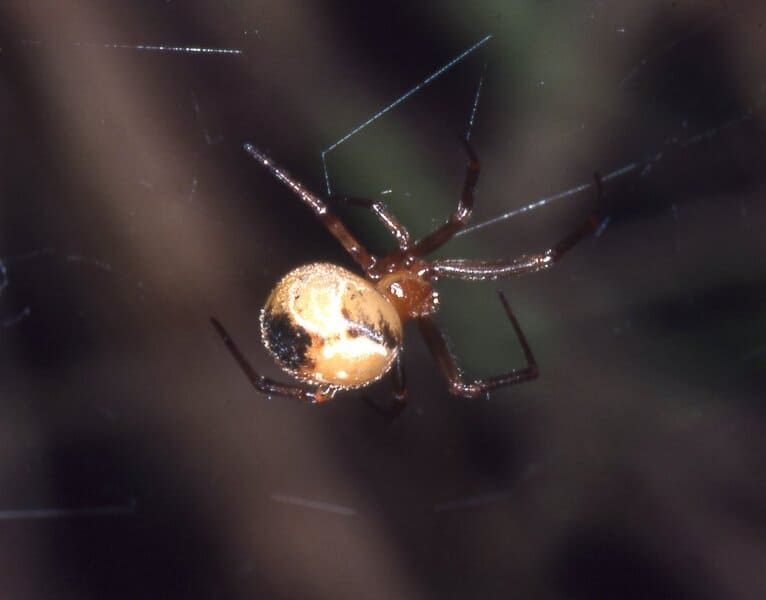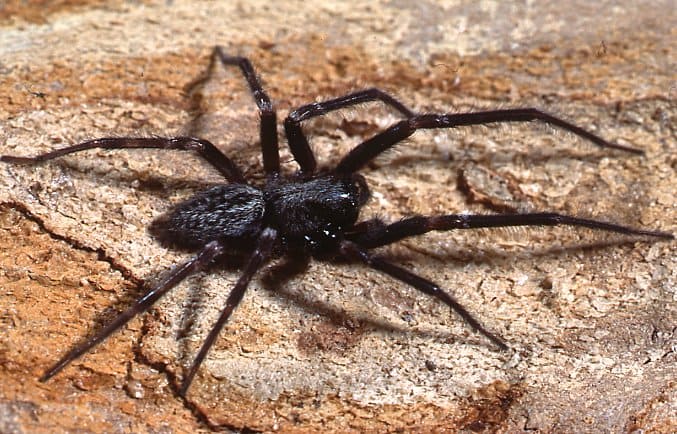Bird‑dropping spiders
IUCN
LCBasic Information
Scientific classification
- name:Bird‑dropping spiders
- Scientific Name:Araneidae (notably Celaenia excavata)
- Outline:Arthropoda
- Family:Araneidae Celaenia
Vital signs
- length:Females 10–15 mm; males 2–4 mm
- Weight:Small orbweavers; size‑dependent
- lifetime:Approx. 1–2 years
Feature
Bird‑dropping masquerade; female moth‑pheromone mimicry; nocturnal sit‑and‑wait; multiple camouflaged egg sacs.
Distribution and Habitat
Foliage in gardens, shrublands and forest edges; Australasian representative in eastern Australia & New Zealand.
Appearance
Mottled white/grey/brown/black; swollen abdomen with tubercles; short sturdy legs; irregular outline.
Details
Bird‑dropping spiders are orbweavers that masquerade as bird droppings. The best‑known species isCelaenia excavata (family Araneidae) from Australasia.
Ecology & Biology
Masquerade: mottled white/grey/brown/black patterning and irregular shape give a convincing “splatter” look.
Prey luring: primarily small moths; females of C. excavata emit sex‑pheromone analogues that attract male moths before silk capture.
Activity: mostly nocturnal; simple support/capture lines in foliage, with motionless daytime perching.
Reproduction: females hang multiple globose/pear‑shaped egg sacs on twigs, camouflaged with silk/debris.
Identification
Size: females 10–15 mm; males 2–4 mm (strong sexual dimorphism).
Form: swollen abdomen with tubercles; relatively short, sturdy legs suited for ambush.
Colour morphs: variable among individuals/regions but maintain the bird‑dropping appearance.
Range & Habitat
C. excavata occurs in eastern Australia and New Zealand; similar mimics occur worldwide in gardens, shrublands and forest edges.
People & Safety
Medical importance: generally minor; bites are rare and usually mild.
Ecological role: nocturnal predation on moths contributes to regulating insect populations.
IUCN: group‑level overview; most species lack assessments. Marked here as Not Evaluated (NE).
FAQ
Q1. Do they smell like droppings? No—the mimicry is mainly visual; some species use moth pheromone analogues to lure prey.
Q2. Big orb webs? No; they rely on short capture lines and close‑range ambush.
Q3. Dangerous? Low medical significance to humans; relocate gently if encountered.
Q4. How to tell from real droppings? Look for legs/eyes/silk and typical perches on leaf stalks/twigs.

